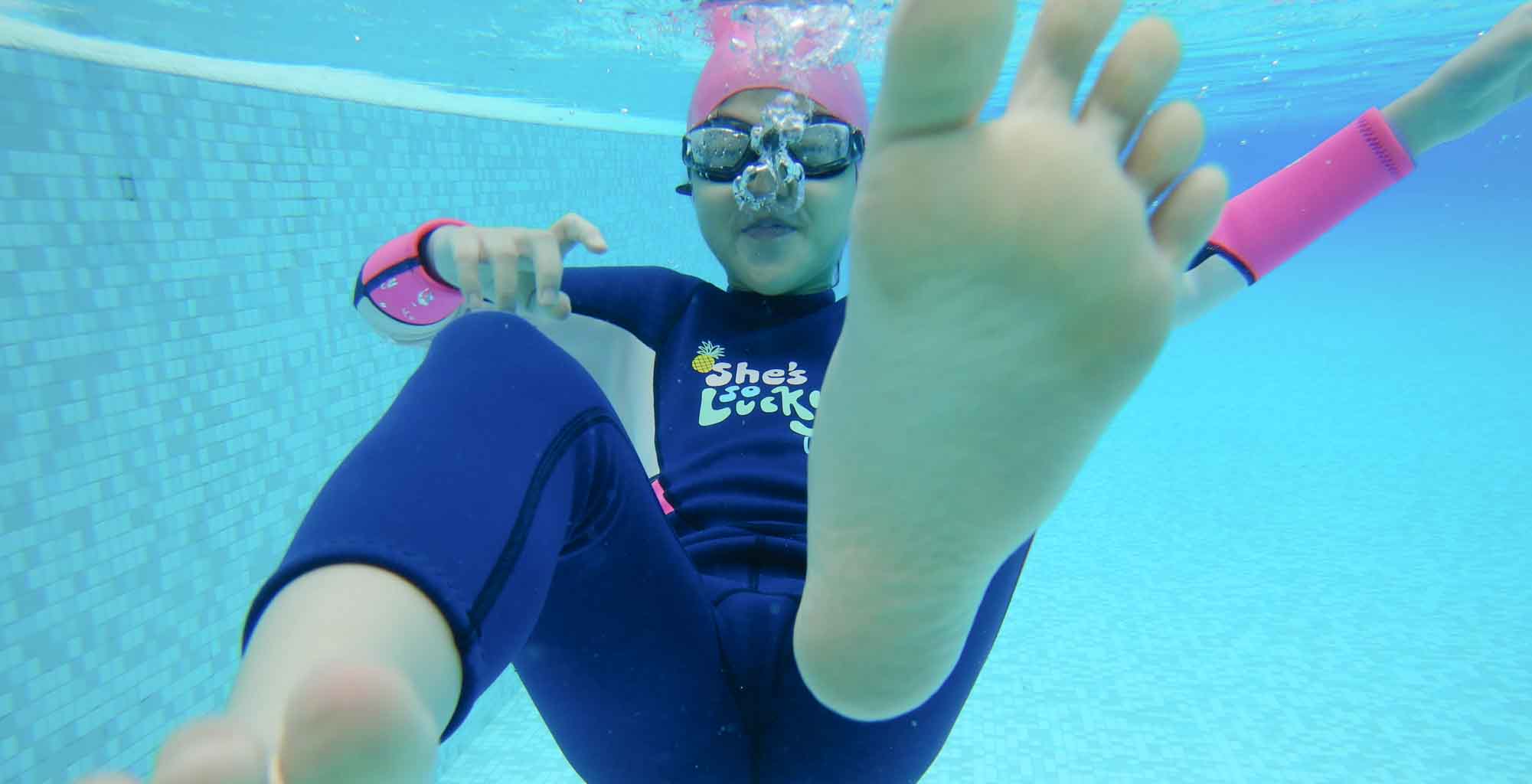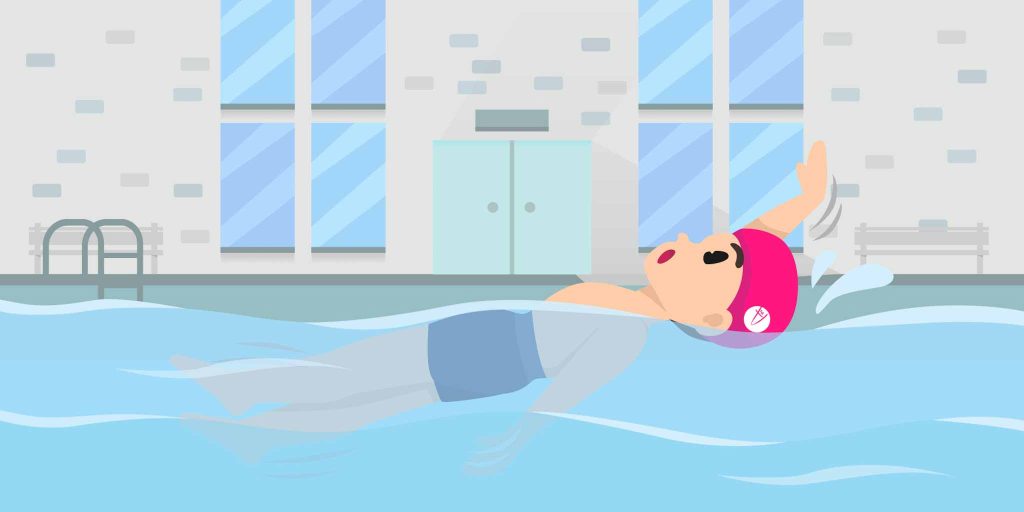
Tips for a Good Backstroke
An extended axis stroke is the backstroke. This indicates that the body revolves from head to toe on an imaginary axis. After emerging straight from the water, the arm bends to force water toward the feet. While the arms move in opposition, the head remains largely still. The body rotates to cause the arms’ shoulders to move in opposition, and the body rotates to cause the arm’s out-of-water shoulder to rotate and point upward. The flutter kick is used in the backstroke. The student’s degree of proficiency and cognitive ability determines the cues for the backstroke.
Backstroke is the most efficient backstroke stroke. It is also the third-fastest swimming stroke of all.
Backstroke and back crawl are interchangeable terms for the same stroke.
Romans and Greeks have enjoyed swimming backstroke from ancient times, but the full stroke development came later. Between the 18th and 19th centuries, elementary backstroke acquired prominence in Europe.
A decent supine floating position, overarm recovery, and a breaststroke leg movement were all required for elementary backstroke.
The modern back crawl or backstroke, established in the twentieth century, combines an alternating arm action with an up-and-down leg action.
It is an upper-body dominating stroke, as opposed to the elementary backstroke. The majority of propulsion is generated by powerful wing-like muscles under each arm.
The backstroke generates the majority of its power through alternating arm action, and its streamlined horizontal posture contributes to its efficiency.
The body spins on an imaginary central axis from head to toe in a long-axis stroke.
The arm will emerge from the water straight, and once beneath the surface, the hand will bend and push the water towards the feet.
The head position is normally stable, with the hands constantly moving in opposition. Backstroke kick, unlike elementary backstroke, employs a flutter kick similar to front crawl to maintain body posture.
In competitive backstroke races, backstroke is the favored stroke. In the 1912 Olympics, Harry Hebner defeated his competitors by swimming on his back for the first time, shocking the globe.
That year, he even beat his opponents by more than three seconds.
Swimming on the back can assist a student in relaxing in the water. The nature of floating on your back, with your face up, provides you with a tranquil and restful sense.
With the front of the face clear of water, no water should splash onto the face. It could be detrimental at first. These poses convey a sense of bewilderment and anxiety.
Students’ faces look upwards and thus unaware of their surroundings. Therefore, students must be taught how to regain standing from supine in the water.
Body Position For Backstroke
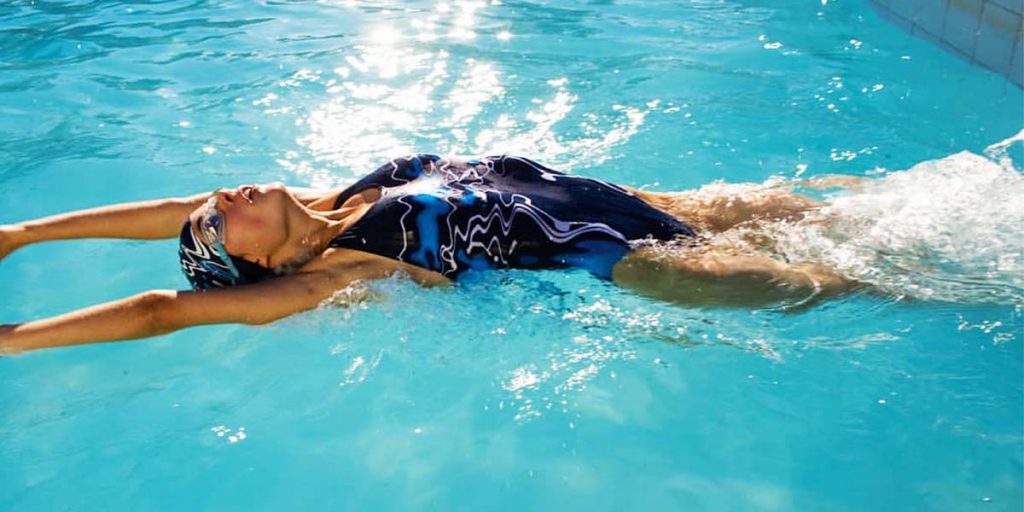
The supine body position is flat and horizontal, with the ears just below the water’s surface.
The head remains still throughout the stroke, with the eyes facing slightly downward.
A good backstroke does not necessitate submerging your head at any point. The head and spine stay centered, and the water fully supports the head.
This action gives inexperienced swimmers confidence.
Hips and shoulders stay close to or at the water’s surface, rolling with the stroke.
To improve efficiency, keep the legs together with the knees closer together.
Backstroke Leg Action
Leg motion is used in the back crawl to give balance and stability. Despite the fact that the back crawl is an arm-dominated stroke, the leg serves two key purposes.
Leg motion contributes 35% of overall propulsion, stabilizes the body, provides rhythm, and greatly contributes forward momentum to backstroke swimming.
Always point your toes while keeping your ankles relaxed. The upward kick produces propulsion and ensures that the kick is delivered from the hip.
The alternating movement of kicking up and down provides the balance of the arm action.
Legs should be extended and toes pointed (plantar flexion)
Ankles must be relaxed and loose, with toes pointed slightly inwards.
When the leg begins to kick upwards, bend the knee slightly and straighten it.
Toes should kick in order to make a slight splash, similar to boiling water, but without breaking the surface.
A few workouts can assist you improve your leg kicking. The “leg press” is what I term the leg action in swimming backstroke.
Instead of leg kick, which might signify any strong movement without much thought, “leg press” helps to express the genuine idea of maximum full resistance.
To begin exploring leg movement, try seated leg press exercises by the pool.
This exercise will teach you when to relax and when to exert effort while also observing and feeling the effectiveness of moving from the hips vs the knee.
Arm Action For Backstroke
There are many misconceptions about the backstroke arm stroke; one of the most common is that the arms remain straight throughout the stroke, like a windmill.
Straight arm pull leads to shoulder problems, and it is also challenging to try lifting yourself out of the pool with straight arms. While it is essential to begin and finish the stroke with straight, well-aligned arms, using a high and firm elbow position, in the middle of the stroke, allows the swimmer to access more power and move forward with an accelerating pull and then push action.
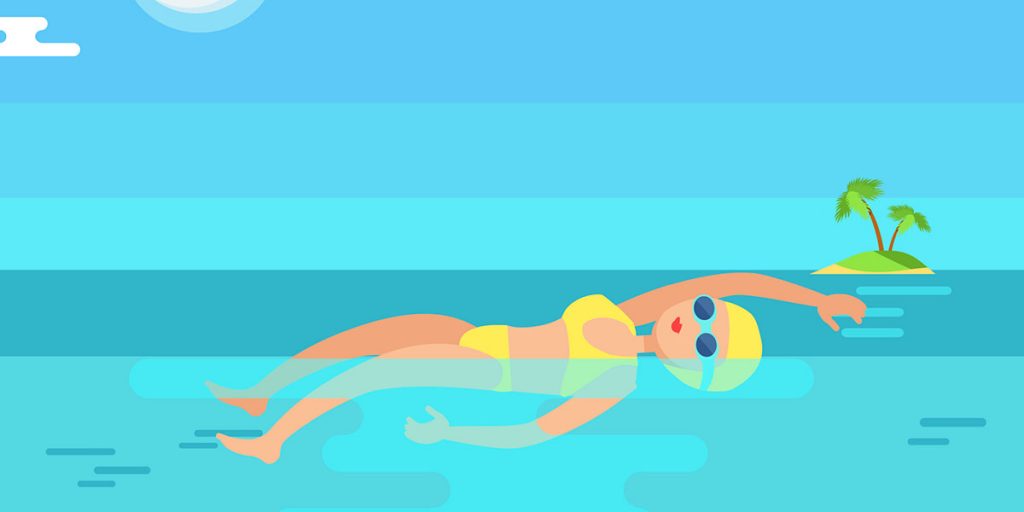
There are two kinds of arm actions in the back crawl. Instructors will teach each type of arm actions according to each of the pupil’s abilities and strengths. They are mainly the “bent arm pull” or the “straight arm pull.”
The bent arm pull is more efficient while the straight arm pull is easier to learn. Instructors will usually start with teaching straight arm pull for beginners and easy progressions.
Always think about your arm action connected to your back. It gives you aid to maintain balance and stability.
Avoid letting your second arm drift too far away from the side when your first arm is stretched backward, this causes over-rotation.

“Bent arm pull.”
The arm will come out of the water, brush past the ear, and then put the little finger first into the water.
The swimmers will then pull from above their heads and push past their hips to mimic pulling with bent arms.
As the arm pulls through underwater, the whole path should look like the letter “S.”
Entry
Entry is identical to the straight arm pull with little finger entering first, palm facing out and the arm will remain close to the shoulder line.
Downward Sweep
The palm should always be facing the direction of the travel
Shoulders roll, and the elbow bends slightly as the arm sweeps downward and outwards.
Upward Sweep
As the hand moves along the shoulder line, the palm will change direction and move up and in toward the hips.
The arm should then be bent 90 degrees to point to the pool’s bottom.
Second Down Sweep
The arm action will then sweeps inwards towards the thigh with the palm facing downwards.
The bending arm action will complete with the arm fully extended and the hand pushing downwards to counterbalance the shoulder roll.
Recovery
With the back of your hand facing you, your thumb will be the first to come out of the water.
The shoulder will roll again, and this time the shoulder of the arm that is getting better will roll up.
When the arm rotates 180 degrees over the shoulder,
When the hand is straight at 12 o’clock, the palm will turn outward so that the little finger goes first into the water during recovery.
“Straight arm pull.”
Entry
The arm will stay straight and as close as possible to the shoulder. So that the little finger goes into the water first, the palms of the hands are turned outward.
Propulsion
The arm will sweep underwater in a semi-circle, pulling with force under the water’s surface, and pushing to the side of the thigh.
Breathing
Regular breathing is encouraged to prevent any breath-holding.
Breathing can be in time with the recovery of each arm, breathing in with one arm recovery and then out with the other.
Timing
A typical scenario of backstroke will be one arm exiting the water and the other beginning to pull while the leg kicks remain continuous throughout.
This may vary with the swimmer’s ability to coordinate; ideally, it should be six-leg kicks to one arm cycle.
Always make sure that the arm pulls are continuous, for example: when one arm enters and begins to pull, the other will have to begin its recovery phase.
Backstroke Swimming “BLABT” Drill
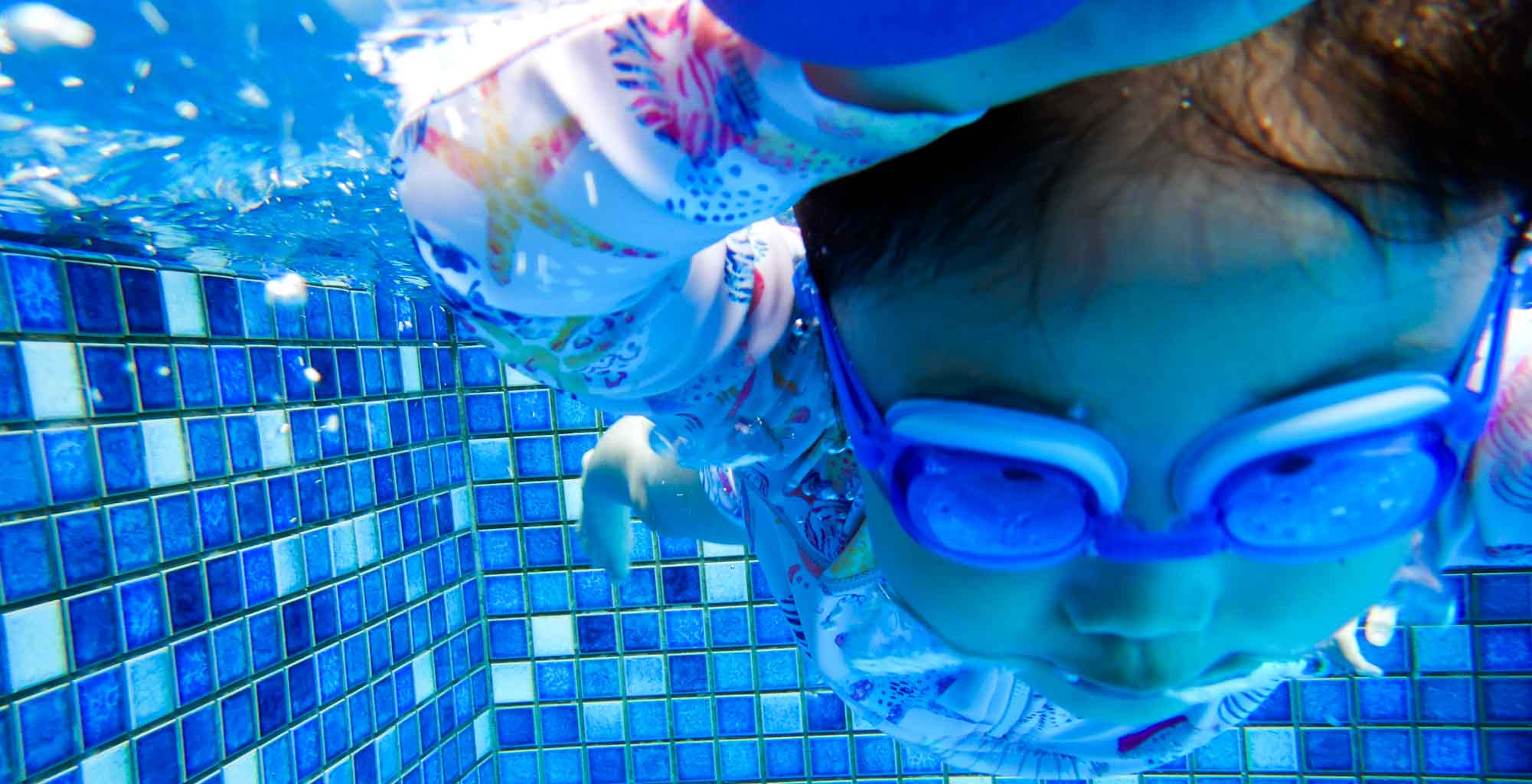
Body Position Drill
- Floating supine supported by floats
- Static supine position and holding a single float
- Push and glide holding a single float
- Pushing and gliding from the poolside independently (with no floatation devices)
Backstroke Leg Action Drill
- Static practice, sitting on the poolside
- Woggle held under each arm
- Float held under each arm
- Float held on the chest
- Float held behind the head.
- Float held over the knees.
- Float held overhead with the arms straight
- Kicking with arm by the side doing sculling
Backstroke Arm Action Drill
- Land drill and practicing static by the poolside
- Single-arm pull with one hand holding a float held on the chest
- Lane rope practice with single-arm pull
- Single-arm pull independent with the other arm held by the side
- Arms practice only, isolation of legs using pull buoys
Backstroke Breathing
- Practice full stroke with breathing
Backstroke Timing
- Pushing and gliding, adding arms and legs together with 3 seconds arm pull switch
- Full stroke drills
Teaching Backstroke With “Cues”
There are different kinds of cues used to guide students in acquiring backstroke skills. All the cues are categorized based on their proficiency and the cognitive level of the students.
You can use all these cues to better help them better understand what is required of them at every specific level.
Novice Level (Cues)
- Chin above water.
- Big arms
Intermediate Level (Cues)
- Move your hand like a pole going through your body from your head to the toes.
- The thumb comes out first, with your pinky into the water
- Little knees give more power at flutter kicking.
Advanced Level (Cues)
- Rotate your shoulders
- Hips up and body roll
Differentiations
Every student is different, so here are some ways to teach backstroke to suit each student.
- If needed, give physical or floating help as and when required.
- As needed, give written and picture-based video tutorials that follow the directions.
- For example, some students who have trouble moving forward can use fins to help them move forward. You can also guide their arm strokes physically.
Benefits of Swimming Backstroke
Backstroke strengthens our back core muscles. It tones the legs and arms without putting strain on the spine, increasing hip and shoulder mobility.
Many people like the feeling of the expansion along the sides of their body, resulting from the rotational movements. The rotation movements build a good foundation for freestyle swimming and the development of an efficient front crawl.
Backcrawl arm action also helps to complement the forward movement of the front crawl.


